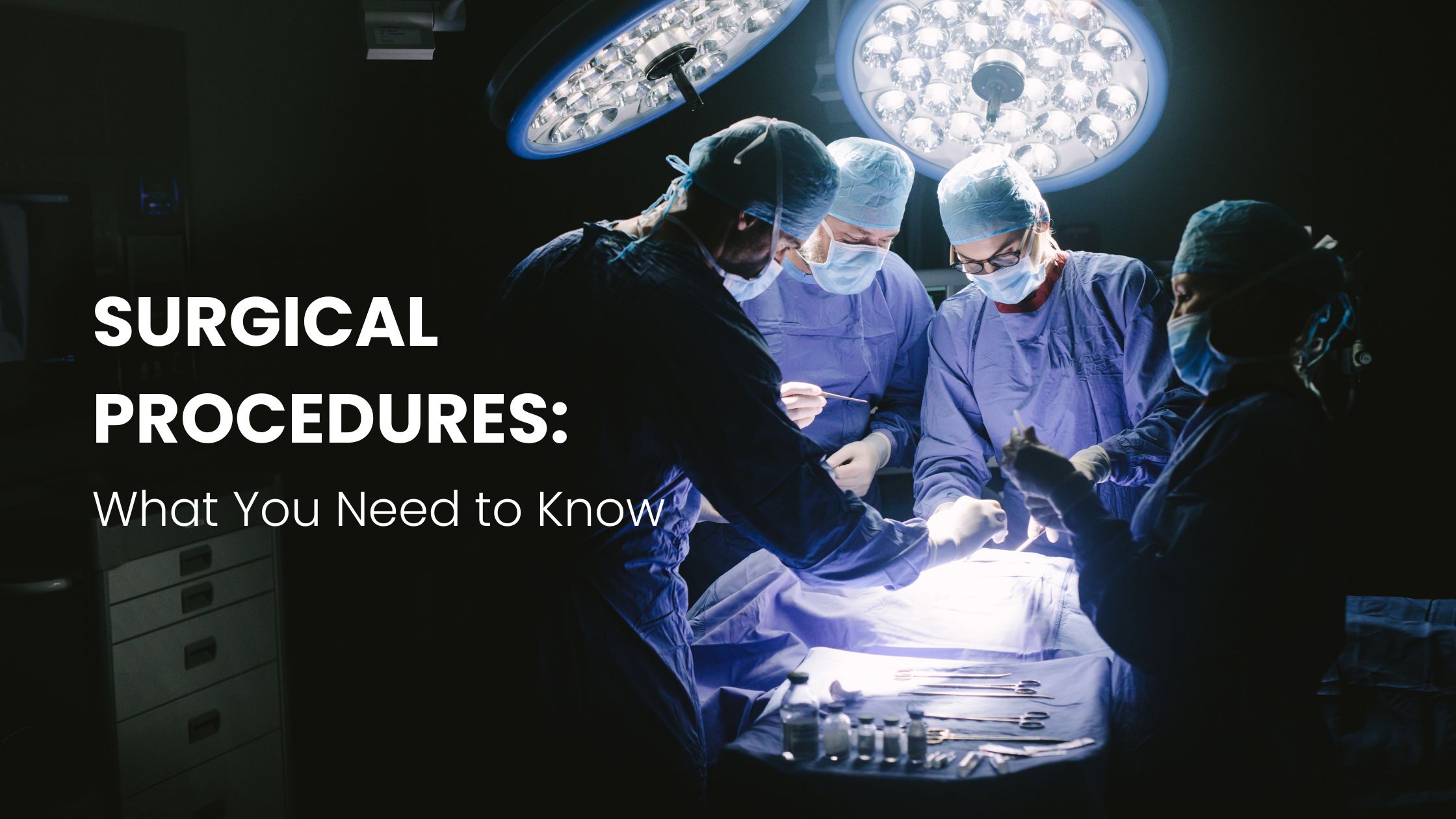Surgery: Your Guide to Safe and Effective Medical Interventions
Surgery is a medical procedure that involves cutting or otherwise manipulating tissues to treat an injury, disease, or deformity. It’s a common and essential part of modern healthcare, with millions of surgical procedures performed worldwide each year. From minor procedures to complex surgeries, understanding the different types and techniques can help you make informed decisions about your health.
By the end of this guide, you’ll have a better understanding of surgical procedures and be well-equipped to make informed decisions about your healthcare.
Preoperative Preparation: Getting Ready for Surgery
Preparing for Surgery: A Step-by-Step Guide
Before undergoing surgery, there are several important steps to take to ensure a smooth and successful procedure. Here’s a breakdown of the typical preoperative preparation process:
- Patient evaluation and assessment: Your healthcare provider will conduct a thorough medical history review, and physical examination, and may order laboratory tests or imaging studies to identify any potential risks or complications.
- Informed consent: You’ll be provided with detailed information about the surgical procedure, including its risks, benefits, and alternatives. You’ll be asked to sign a consent form indicating your understanding and agreement to the procedure.
- Fasting guidelines: To reduce the risk of complications during surgery, you’ll likely be instructed to avoid eating or drinking for a certain period before the procedure.
- Premedication: In some cases, you may be given medication before the procedure to help you relax or reduce anxiety.
By following these guidelines, you can help to minimize the risks and complications associated with surgery.
Surgical Techniques: A Closer Look at Modern Procedures
Understanding the Different Approaches to Surgery

When it comes to surgical procedures, there’s a wide range of techniques available to address various medical conditions. Here’s a breakdown of some of the most common approaches:
Open Surgery: The Traditional Method
- Definition: Involves making large incisions to access the affected area.
- Common for: Complex procedures, major surgeries like heart or brain surgery.
- Advantages: Can provide more direct access and control.
- Disadvantages: Longer recovery time, more pain, and potential for larger scars.
Minimally Invasive Surgery (MIS): A Less Invasive Option
- Definition: Uses small incisions and specialized instruments to perform procedures.
- Common for: Many surgical conditions, including laparoscopic cholecystectomy (gallbladder removal) and appendectomy.
- Advantages: Smaller incisions, faster recovery, less pain, and lower risk of complications.
- Disadvantages: May not be suitable for all procedures or patients.
Robotic Surgery: Precision and Control
- Definition: Uses a computer-controlled robotic system to perform procedures.
- Common for: Prostate surgery, gynecological surgery, and cardiac surgery.
- Advantages: Greater precision, smaller incisions, and potentially better outcomes.
- Disadvantages: Requires specialized training for surgeons.
Endoscopic Surgery: Looking Inside
- Definition: Uses a thin, lighted tube with a camera to examine internal organs.
- Common for: Diagnostic procedures, such as colonoscopy, and therapeutic procedures, like endoscopic biopsy.
- Advantages: Less invasive, provides valuable information about internal organs.
- Disadvantages: May have limitations in certain cases.
The choice of surgical technique depends on various factors, including the type of procedure, the patient’s health, and the surgeon’s expertise. Your healthcare provider will discuss the best options for your specific condition.
Postoperative Care: A Guide to Healing and Recovery
Navigating Postoperative Care: Tips for a Smooth Recovery

Postoperative care is a crucial part of the surgical process, and it plays a vital role in ensuring a successful recovery. Here’s a breakdown of what you can expect:
- Pain management: Effective pain management is essential for a comfortable recovery. Your healthcare provider will prescribe medications to alleviate any discomfort.
- Wound care: Proper wound care is crucial to prevent infection and promote healing. Follow your doctor’s instructions for cleaning, dressing, and monitoring your wound.
- Rehabilitation: Depending on the type of surgery, you may need physical or occupational therapy to regain strength, mobility, and function.
- Follow-up appointments: Regular follow-up appointments with your healthcare provider will allow them to monitor your progress, address any concerns, and ensure a complete recovery.
- In-Home Care: After Surgery In-home care services can be a valuable option for patients who require additional support or assistance during their recovery. These services can provide help with activities of daily living, wound care, medication management, and other tasks, allowing patients to recover comfortably in their own homes.
By following these guidelines and working closely with your healthcare team, you can optimize your healing process and minimize complications.
Common Surgical Procedures: A Comprehensive Guide
Understanding Different Types of Surgeries
From heart surgery to plastic surgery, there’s a wide range of surgical procedures available to treat various medical conditions. Here’s a breakdown of some of the most common types:
Cardiovascular Surgery
- Coronary artery bypass grafting (CABG): Used to treat coronary artery disease.
- Heart valve replacement: Replaces damaged or diseased heart valves.
- Angioplasty and stenting: Opens blocked arteries in the heart.
Orthopedic Surgery
- Joint replacement: Replaces damaged or diseased joints (e.g., knee, hip).
- Fracture repair: Fixes broken bones.
- Knee replacement surgery: Replace a damaged knee joint with an artificial one.
General Surgery
- Appendectomy: Removes the appendix.
- Cholecystectomy: Removes the gallbladder.
- Hernia repair: Repairs a hernia in the abdominal wall.
Plastic Surgery
- Breast augmentation: Increases breast size.
- Facelift: Tightens facial skin.
- Liposuction: Removes excess fat.
Neurosurgery
- Brain surgery: Treats conditions like brain tumors or aneurysms.
- Spinal surgery: Treats conditions like herniated discs or spinal stenosis.
This is just a brief overview. The specific surgical procedure you need will depend on your individual health condition and medical history.
Complications and Risks: Understanding the Potential Challenges
Navigating the Risks of Surgery
While surgery is generally safe, there are potential complications and risks associated with any surgical procedure. Understanding these challenges can help you make informed decisions and prepare for your surgery.
- Infection: This can occur when bacteria or other microorganisms enter the surgical wound.
- Bleeding: Excessive bleeding can occur if blood vessels are damaged during the procedure.
- Blood clots: Blood clots can form in the legs or lungs after surgery.
- Anesthesia complications: There are potential risks associated with anesthesia, such as respiratory depression or allergic reactions.
- Surgical site infections: Infections can develop at the site of the incision.
Minimizing Risks
To minimize the risks of surgical complications, it’s important to:
- Follow your healthcare provider’s instructions before, during, and after surgery.
- Communicate any concerns or symptoms to your medical team.
- Maintain a healthy lifestyle to improve your overall health and reduce the risk of complications.
By understanding the potential risks and taking steps to minimize them, you can increase your chances of a successful surgical outcome.
Emerging Trends in Surgery: The Future of Healthcare
Stay Ahead with the Latest Surgical Innovations
The field of surgery is constantly evolving, with new techniques and technologies emerging to improve patient outcomes and enhance the overall surgical experience. Here are some of the most exciting trends shaping the future of surgery:
- Minimally invasive surgery (MIS): As technology advances, MIS procedures are becoming even more precise and minimally invasive, leading to faster recovery times and fewer complications.
- Robotic surgery: Robotic-assisted surgery continues to gain popularity, offering enhanced precision, dexterity, and control.
- Regenerative medicine: This cutting-edge field is exploring the use of stem cells and other biological materials to repair damaged tissues and organs, potentially revolutionizing surgery.
- Personalized surgery: Tailored surgical approaches based on individual patient factors, such as genetics and medical history, are becoming more common, leading to more effective treatments.
- Artificial intelligence (AI): AI is being used to assist surgeons with tasks such as image analysis, planning, and even performing certain procedures, improving accuracy and efficiency.
By staying informed about these emerging trends, you can be confident that you’re receiving the most advanced and effective surgical care available.
Conclusion: A Successful Surgical Journey
Surgery: A Guide to Safe and Effective Medical Interventions
As you’ve learned in this comprehensive guide, surgical procedures play a vital role in modern healthcare. From understanding the different techniques to navigating the preoperative and postoperative processes, having a solid understanding of surgery can help you make informed decisions about your health.
By following these guidelines and working closely with your healthcare team, you can increase your chances of a successful surgical outcome and a speedy recovery.




